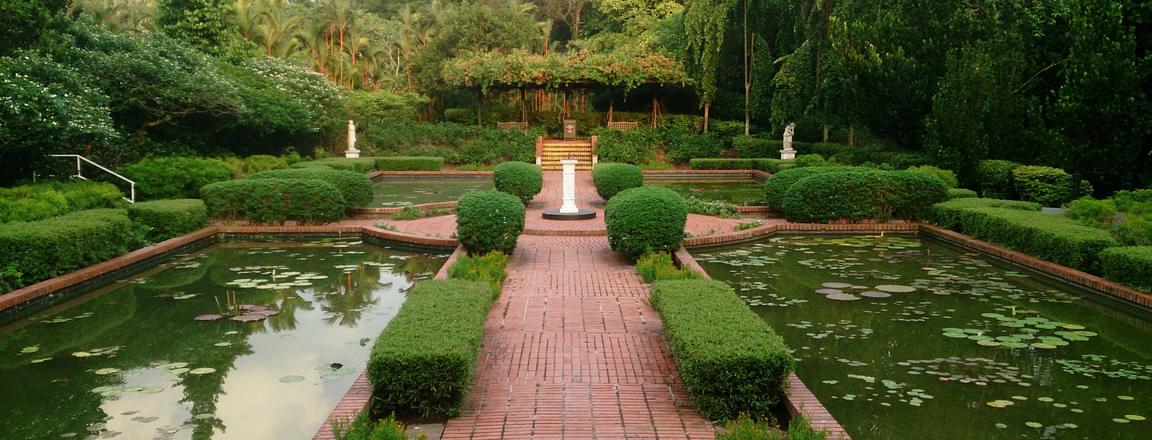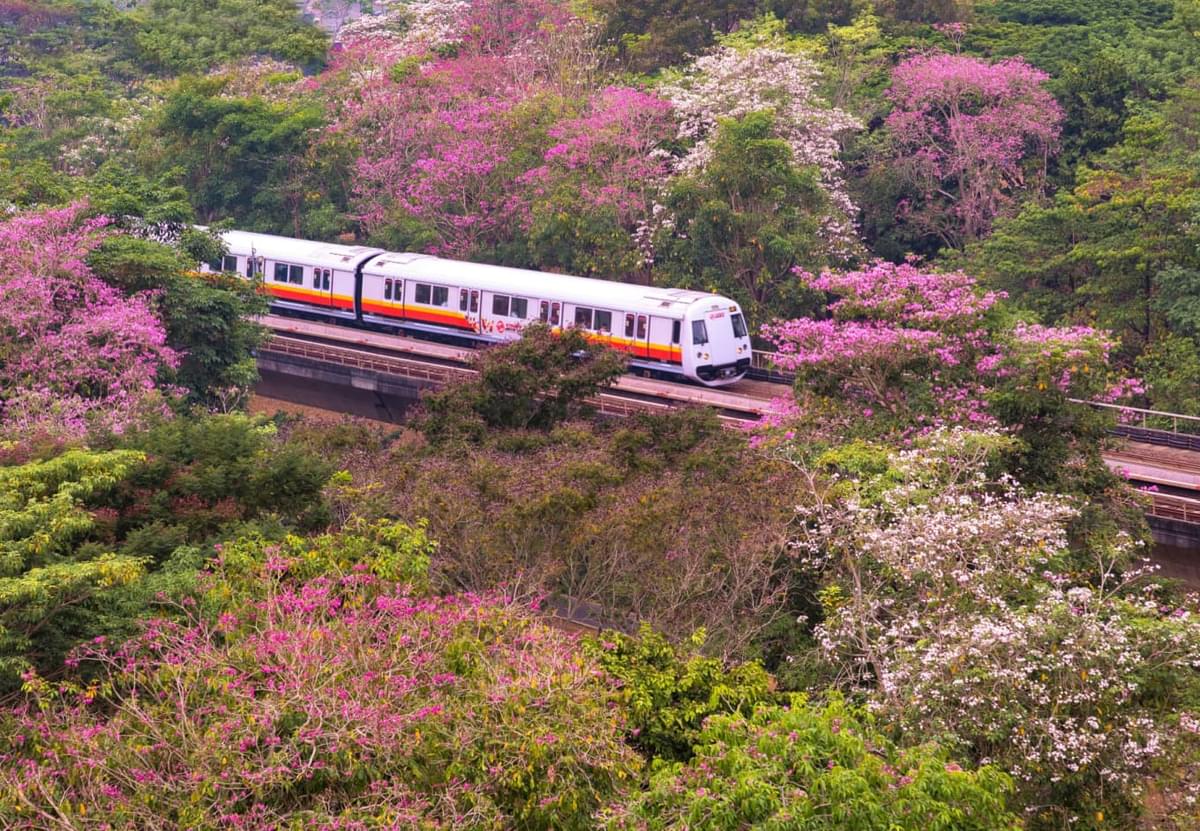
Spring In Singapore: Weather Guide & Travel Tips

One will never regret visiting this amazing city-state at any time of the year, as Singapore enjoys a tropical climate. But to plan your trip in the best possible way, one needs to be informed about the weather patterns in Singapore. Spring in Singapore is the rejuvenation period as the beautiful green vegetation renews its colour against the backdrop of indigo skies and fresh winds. When winter starts fading, nature starts revealing itself, which draws the attention of the travellers to visit this vibrant city.
Key Takeaways
- February to April offers the most pleasant weather in Singapore with lower humidity and minimal rainfall.
- Singapore's tropical climate maintains temperatures between 26°C-32°C year-round with no distinct seasons.
- Chinese New Year (January-February) and various festivals make the early months culturally vibrant.
- Avoid June to September due to haze from regional forest fires and higher humidity.
- Indoor attractions and covered areas make Singapore enjoyable year-round, regardless of the weather.
What is the Weather like in Singapore in Spring?

Spring time in Singapore is quite comfortable with warm temperatures ranging between 27°C to 33°C. The season runs from March to May and is characterised by low humidity and minimal rainfall, which makes it suitable to enjoy outdoor activities and adventures. With the vegetation coming alive in its vibrant colours, the spirit of the city gets charged with excitement as numerous festivals and events line up during the season.
Why Visit Singapore in the Spring Season?
- If you wish to feel the magic of this city without having to endure the scorching heat and heavy downpours like the other seasons, the Spring season in Singapore is the most suitable season.
- Spring, with its warm weather conditions, provides great conditions to explore outdoors and indulge in cultural exploration.
- From the breathtaking natural landscapes to wild and vibrant celebrations, Spring in Singapore invites you to wander and embark on a journey of magical experiences.
ALSO READ: Best time to visit Singapore
Best Things to do in Singapore during Spring

1. Enjoy a Thrilling Adventure on Sentosa Island
Sentosa Island provides the most pleasant experiences in the months of March through May. Universal Studios Singapore has outdoor areas that are fun to visit when the climate is warm and humidity levels are not too high. The beaches of the island, such as Siloso Beach and Palawan Beach, turn into truly refreshing places instead of boiling sun-traps.
2. Singapore River Cruises
Spring In Singapore offers a pleasant river cruise, where you can enjoy the skyline of the city from a new angle. Visit the famous tourist attractions such as Raffles, the Esplanade and the old Parliament House to understand the rich history of Singapore through experienced tour guides.
3. Explore Singapore's Gardens by the Bay
The cooler months of the Spring Season transform Garden By The Bay into a photographer’s paradise. The iconic Supertree Groove offers amazing backdrops to any photo without the discomfort of extreme heat and humid conditions.
4. Immerse yourself in Cultural Celebrations
During your visit to Singapore, enjoy the lively celebrations of Chinese New Year in Chinatown, where the streets are filled with dragon and lion dances, colourful displays and thrilling performances.
5. Enjoy the Singapore International Jazz Festival
One should not miss the Singapore International Jazz Festival at Marina Bay Sands, where local and international talents meet to perform their unforgettable jams. Artists come together to deliver their unforgettable music. Also, make sure to experience the spectacular views from the Skypark Deck and enjoy a drink at Skybar while you soak up the atmosphere.
6. Singapore Zoo
Singapore Zoo and Bird’s Paradise are the two outdoor attractions that are enhanced by the pleasant weather conditions. A walk through the open-air exhibits of the zoo and engaging yourself in the feeding sessions turns into a happy therapy.
- Universal Studios on Seat in coach
Singapore Spring Travel Tips
- The tropical climate is best suited to light, breathable garments made out of natural materials.
- It is essential to have a raincoat or a small umbrella at all times of the year, since unexpected light rain can happen at time of the year.
- Make sure to pack comfortable walking shoes.
- The sun protection, such as a broad-brim hat and high-SPF sunscreen, is essential all year round because Singapore is an island near the equator.
- The air-conditioned buses, as well as the Mass Rapid Transit network in Singapore, help to escape the outside conditions.
- For a more comfortable experience, it is advisable to divide your Singapore itinerary during the hottest hours of the day.
- Most attractions are easily accessible during the morning hours or the late evenings.
- Animals are active in the cool morning hours, and it is rewarding to visit them during the mornings.
Singapore becomes a beautiful, exciting and wonder-filled picturesque destination in spring. Be it the grand festivals, stunning natural beauty or awe-inspiring activities, there is never any shortage of experiences to captivate travellers in this sweet season. Be it wandering in beautiful gardens or experiencing vibrant cultural festivals, Spring in Singapore offers an unforgettable experience and a never-ending adventure to travellers all around the world. Consider our Singapore Tour Package for a surprise-filled adventure.
FAQ's
What is the best month to visit Singapore for good weather?
March through May offers the best weather conditions in Singapore, with lower humidity levels and minimal rainfall, making outdoor activities most comfortable.
Does Singapore have a spring season or distinct seasons?
No, Singapore does not have spring or traditional seasons. Located near the equator, it experiences a tropical climate with consistent temperatures (26°C-32°C) year-round and two monsoon periods rather than four seasons.
When should I avoid visiting Singapore due to the weather?
June to September can be challenging due to the annual haze season from regional forest fires and higher humidity levels. However, Singapore's excellent indoor attractions make it visitable year-round.
What is the wettest time of year in Singapore?
The Northeast Monsoon (December-March) and Southwest Monsoon (June-September) bring different rainfall patterns, but brief afternoon showers can occur throughout the year. November and December typically see the highest rainfall.
How hot does it get in Singapore, and when?
Singapore maintains consistent temperatures between 26°C-32°C throughout the year. The humidity level, rather than temperature, varies more significantly and affects comfort levels, with the lowest humidity occurring from February through April.
Update your location?



